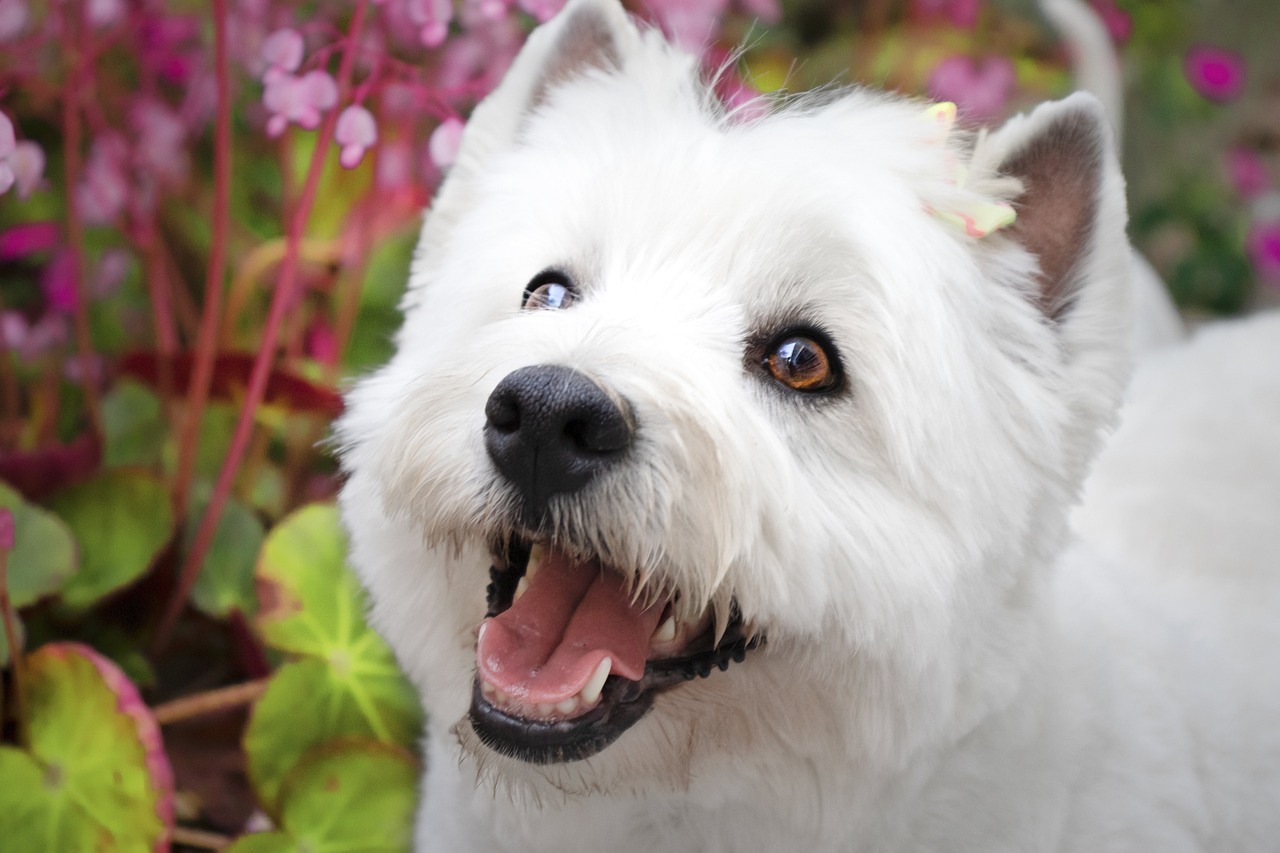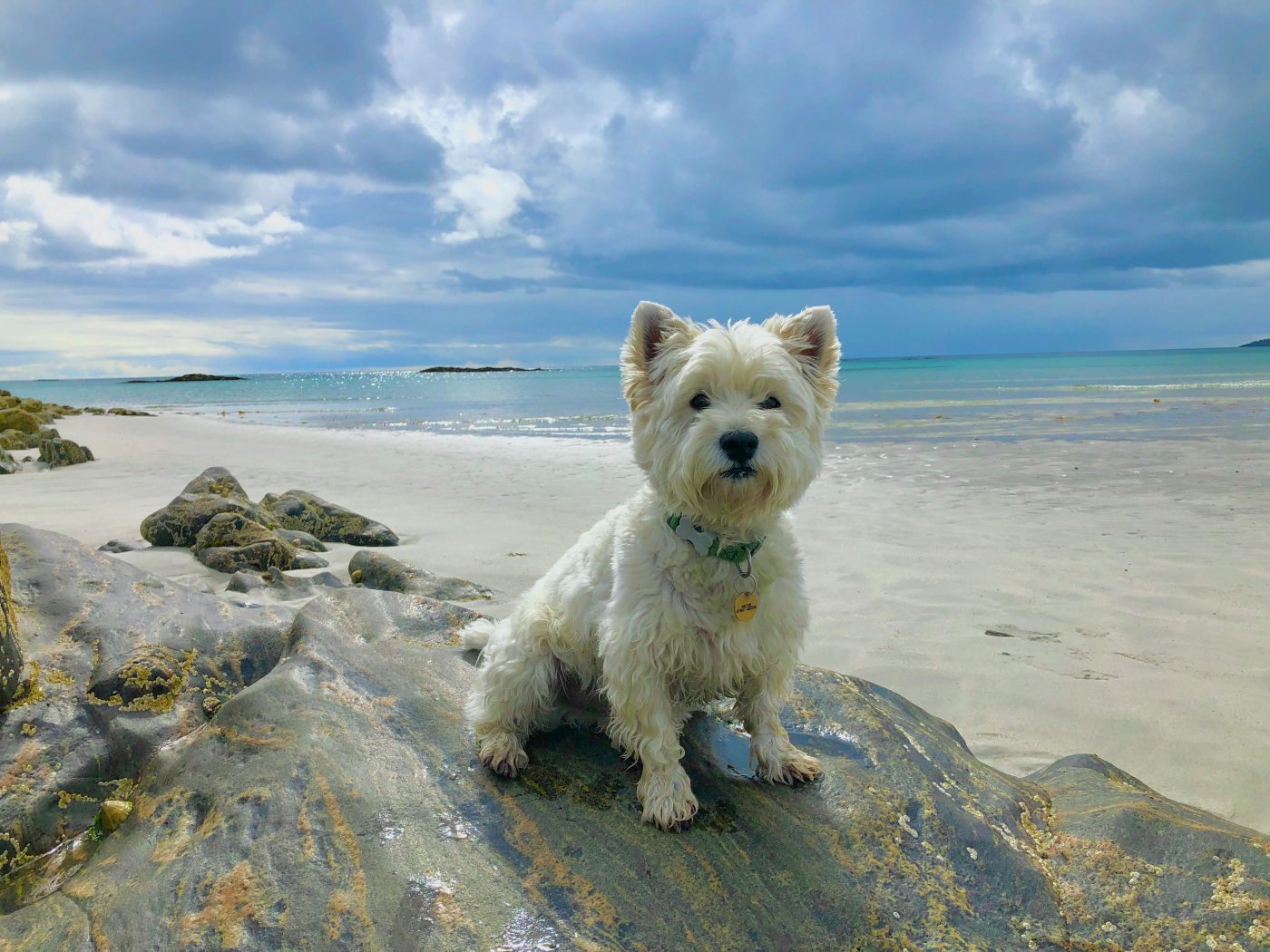The West Highland White Terrier, affectionately known as the Westie, is a breed of dog whose roots are deeply entrenched in Scottish history, tracing back to the 17th century. These small but hardy terriers are celebrated for their bright white coats and vivacious personalities, characteristics that have endeared them to dog lovers around the world. The Westie’s origin story is a fascinating tale of evolution, bred for tenacity and intelligence, originally serving as rodent hunters in the rugged terrains of Scotland. Their ancestry is commonly linked with other Scottish terriers, sharing a lineage that was bred for hunting and pest control on farms and estates. The breed’s development was influenced by several factors, including geographical isolation, which allowed for the preservation and refinement of its distinctive traits. This history is not only a testament to the breed’s survival and adaptability but also to the cultural significance of terriers in Scottish rural life. Over centuries, Westies have transitioned from working-class dogs to beloved companions, showcasing their enduring appeal and versatility.

The Early History of the West Highland White Terrier
The early history of the West Highland White Terrier is intertwined with Scotland’s rural landscape, where they were bred and employed by farmers to control populations of rats, foxes, and other vermin. These terriers, known for their tenacity, courage, and intelligence, were adept at navigating the rocky crevices and burrows of the Scottish Highlands. The breed’s ancestors are believed to include the Cairn Terrier and the Scottish Terrier, among others within the terrier group. Legend has it that the Westie’s distinctive white coat was selectively bred into the lineage after a tragic accident involving Colonel Edward Donald Malcolm of Poltalloch and his reddish-brown terrier, which was mistaken for a fox and shot. Determined to prevent such a mishap from recurring, Malcolm is credited with developing a breed of white terriers, which could be easily distinguished from game.
The Breed’s Development and Recognition
The development of the West Highland White Terrier into the breed known today was a process marked by selective breeding practices focused on enhancing its physical and temperamental qualities. By the late 19th century, the breed began to gain recognition beyond the confines of Scottish estates. It was first shown at dog shows under various names, such as the Poltalloch Terrier and the Roseneath Terrier, names derived from the estates of their early promoters. The breed’s standardization was spearheaded by enthusiasts who were keen on preserving its distinctive characteristics, leading to the establishment of the first breed club in the early 20th century. In 1906, the breed was officially recognized by the Kennel Club of England as the West Highland White Terrier. This recognition marked a significant milestone in the breed’s history, setting the stage for its international popularity.
The Westie’s Role in Modern Times
In modern times, the West Highland White Terrier has transcended its origins as a rodent hunter to become one of the most beloved companion dogs. Their adaptable nature and compact size make them well-suited to a variety of living situations, from rural farms to urban apartments. Westies possess a lively and friendly temperament, making them excellent family pets. They are also known for their participation in various dog sports, including agility, obedience, and earth dog trials, showcasing their intelligence and agility. Beyond their role as companion animals, Westies have become cultural icons, appearing in television, movies, and advertisements, further solidifying their status in popular culture.
The West Highland White Terrier, with its rich heritage and enduring charm, stands as a testament to the enduring appeal of Scottish terrier breeds. From its practical origins in the rugged Scottish Highlands to its beloved status as a companion and icon, the Westie’s journey is a remarkable narrative of adaptation and survival. Their history not only reflects the breed’s physical and temperamental evolution but also its significant place within the broader tapestry of canine breeds. As the Westie continues to win hearts around the world, its story remains a compelling chapter in the history of dogs.
Frequently Asked Questions About The History of Westies

1. What is the origin of West Highland White Terriers?
West Highland White Terriers, commonly known as Westies, originated in Scotland, particularly in the West Highlands, in the 19th century. They were bred from a lineage of Scottish terriers, including Cairn, Dandie Dinmont, and Skye Terriers, to create a breed adept at hunting small game such as foxes, otters, and vermin. The Westie’s white coat was selectively bred to distinguish them from prey during hunting activities.
2. How did Westies get their distinctive white coat?
The distinctive white coat of the West Highland White Terrier was a result of selective breeding practices. The story goes that Colonel Malcolm of Poltalloch accidentally shot one of his Cairn Terriers, mistaking it for a fox. Distraught, he decided to breed only white dogs that could easily be distinguished from the game. Over time, this breeding preference led to the establishment of the Westie’s characteristic white coat.
3. What was the original purpose of West Highland White Terriers?
West Highland White Terriers were originally bred to hunt and control the population of foxes, otters, and vermin on farms and in the rugged terrain of the Scottish Highlands. Their small size allowed them to pursue prey in their dens, and their tenacious, fearless nature made them effective hunters. Over time, while they have retained their hunting instincts, Westies have become more commonly known as companion animals.
4. When were West Highland White Terriers first recognized as a breed?
West Highland White Terriers were first recognized as a distinct breed in the early 20th century. The breed was officially recognized by The Kennel Club (UK) in 1906. This formal recognition marked the Westie’s transition from a working terrier to a breed celebrated in dog shows and as companion pets. The American Kennel Club (AKC) recognized the West Highland White Terrier in 1908.
5. Are Westies related to other Scottish terrier breeds?
Yes, Westies are closely related to other Scottish terrier breeds, including the Cairn Terrier, the Scottish Terrier, and the Dandie Dinmont Terrier. These breeds share a common ancestry and were initially bred for similar purposes of hunting small game in the rugged Scottish terrain. Over time, selective breeding practices emphasized different physical characteristics and temperaments, leading to the distinct breeds we recognize today, including the West Highland White Terrier.
6. What are the key characteristics of West Highland White Terriers?
West Highland White Terriers are known for their small, compact size, distinctive white coat, and strong, confident personality. They typically weigh between 15 to 20 pounds and stand about 10 to 11 inches tall at the shoulder. Westies possess a double coat, with a soft undercoat and a harder outer coat, which requires regular grooming. They are known for their intelligence, independence, and spirited nature, making them both entertaining and loyal companions.
7. How have Westies been used in popular culture?
Westies have been featured in popular culture in various ways, including in advertising, movies, and television shows. Their distinctive appearance and charming personalities have made them appealing mascots and characters. One of the most famous Westies in popular culture is the dog featured in the Cesar dog food commercials. Westies have also appeared in films and television series, often portraying loyal and spirited companions.
8. What health concerns are common in West Highland White Terriers?
West Highland White Terriers, like all breeds, are prone to certain health issues. Common health concerns for Westies include skin conditions such as atopic dermatitis, genetic conditions like Legg-Calve-Perthes disease affecting the hip joint, and craniomandibular osteopathy, which affects the skull and jaw. Regular veterinary care, including check-ups and preventative measures, can help manage these conditions and ensure a healthy life for a Westie.
9. How do Westies perform in dog sports and competitions?
West Highland White Terriers are active and intelligent dogs that can excel in dog sports and competitions, including agility, obedience, and earth dog trials. Their natural hunting instincts and eagerness to please make them competitive participants in events that challenge their physical and mental abilities. Westies are known for their determination and can achieve high levels of success in competitive arenas with proper training and socialization.
10. What is the temperament of West Highland White Terriers?
West Highland White Terriers have a lively, friendly temperament. They are known for their confidence, courage, and loyalty. Westies are typically sociable and enjoy being part of the family, often showing affection and a playful nature. However, they can also exhibit independence and stubbornness, traits common in terrier breeds. Early socialization and consistent training can help shape a well-behaved and adaptable companion.
11. Are Westies good with children and other pets?
West Highland White Terriers can be good with children and other pets, especially when raised together or properly introduced. Their playful and energetic nature makes them fun companions for children. However, as with any breed, interactions should be supervised to ensure the safety of both the dog and the children. Westies may have a strong prey drive due to their hunting background, so caution is advised when introducing them to smaller pets.
12. What grooming needs do West Highland White Terriers have?
West Highland White Terriers require regular grooming to maintain their distinctive white coat. This includes brushing several times a week to prevent matting and tangling, as well as regular baths to keep their coat clean and white. Professional grooming every 4 to 6 weeks can help manage their double coat, including trimming around the face and ears. Regular nail trimming, ear cleaning, and dental care are also important for overall health.
13. How do West Highland White Terriers adapt to apartment living?
West Highland White Terriers can adapt well to apartment living due to their small size and moderate exercise needs. They are active indoors and can get much of their exercise through play. However, daily walks and opportunities for mental stimulation are important to keep them healthy and prevent boredom. Westies are known for their strong personalities and can sometimes be vocal, so training to manage barking is recommended for apartment dwellers.
14. What is the lifespan of West Highland White Terriers?
The lifespan of West Highland White Terriers is typically between 12 to 16 years. Factors that can influence their lifespan include genetics, diet, exercise, and access to preventive veterinary care. Providing a balanced diet, regular exercise, and routine health check-ups can help ensure that a Westie lives a long and healthy life.
15. How can potential owners ensure a healthy West Highland White Terrier puppy?
Potential owners can ensure a healthy West Highland White Terrier puppy by choosing a reputable breeder who follows ethical breeding practices. This includes breeders who health screen their breeding dogs for common genetic conditions and provide a clean, nurturing environment for their puppies. Prospective owners should ask for health clearances and ideally meet the puppy’s parents to observe their temperament and physical health. Educating themselves on the breed’s common health issues and care requirements can also help owners provide the best possible life for their Westie puppy.
 Toledo, United States.
Toledo, United States.